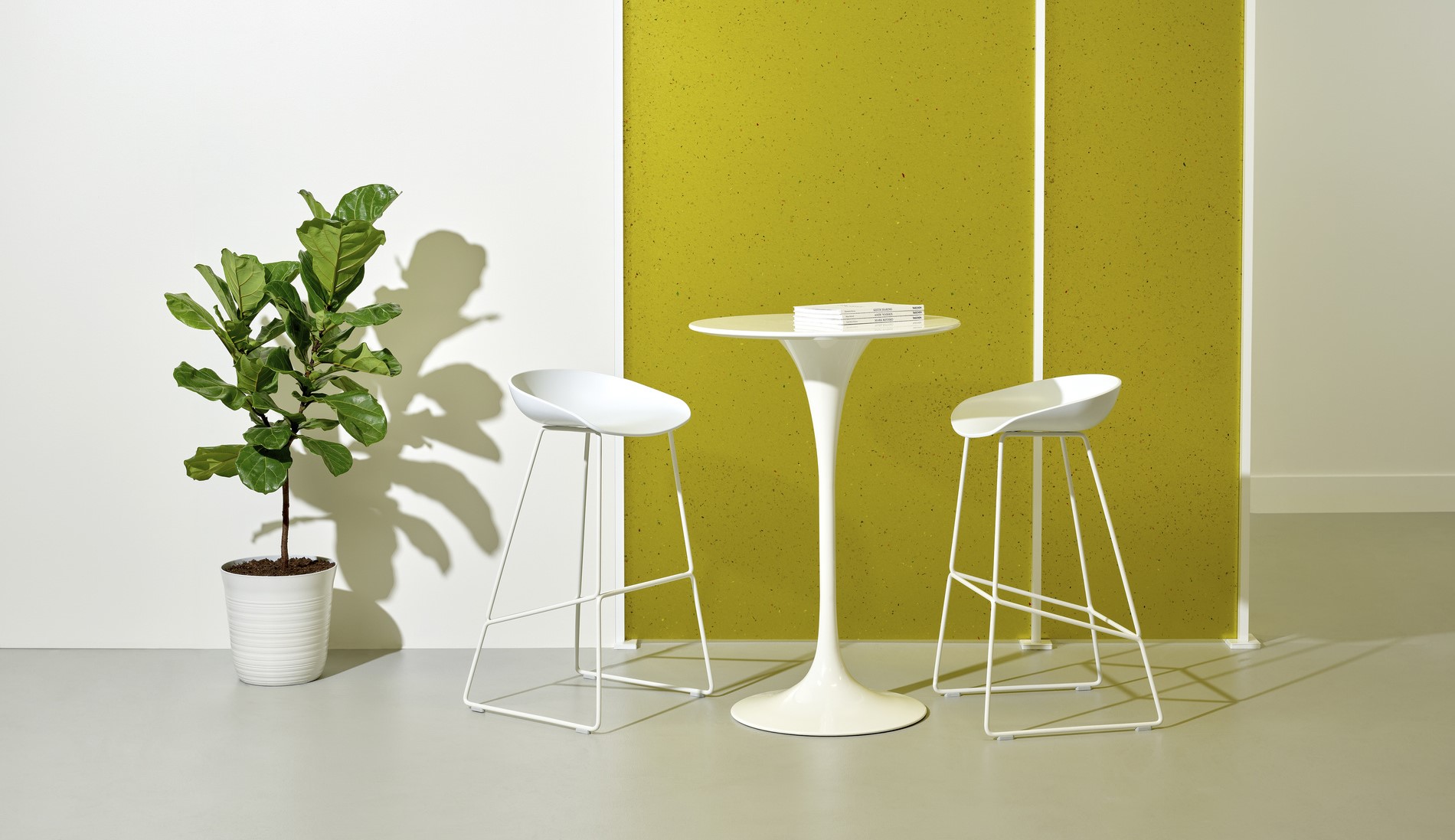The newest iteration of 3form’s Varia product line is a breakthrough, 100 percent recycled material called Flek Pure.
Where the rest of the Varia line is 40 percent recycled, Flek Pure is sourced primarily from in-house waste, for a textured, terrazzo-like look.
“We’re using manufacturing fall-off, old panels, and returned samples,” says Christian Darby, vice president of design at 3form. “We re-grind it.”
Flek originally launched in 2019, with 75 percent recycled material. The new product achieves 3form’s long-term goal of maximizing the amount of repurposed material while maintaining the material’s signature translucency.
The material is made of PET-G, the same that disposable water bottles are made of, and the transparency-to-translucency ratio is determined by what material is placed inside. “It could be textiles, organics, tree branches, flowers, bamboo, grasses or paper,” he says. “It can be totally opaque or transparent – the translucency can be controlled with the materials we put in it.”
3form was created in 2004 by Ray Goodman, who came from another industry known for molding different materials. “His affinity to architectural space and design got him thinking about a material form and mold in the architectural world,” he says. “He did a lot of research to get to these materials that does all those things.”
Wynn Clayton joined shortly after the firm started, and is now the CEO. Ten years ago, Hunter Douglas acquired the company.
Its panels come in four-by-eight-foot and four-by-ten-foot sheets, and are used to bring color into a room. They’re mostly found in commercial applications – for health care, hospitality, hotel lobbies and offices. It can be cleaned with any cleaning solution – and it’s durable.
“People use it a lot for partitions, whether floor-to-ceiling or cantilevered where it stops at four feet or eight feet,” he says. “Usually, It’s not transparent so privacy and light comes through – and it’s warmer than glass so it’s a little bit inviting.”
3form has a glass division also, and Varia is similar when it comes to cost. But it does offer a 250-color system that can be customized. And it’s a little more flexible.
“We can heat up the panel after it’s made and form it into more complex geometries, – and glass is expensive at that,” he says. “This won’t break or shatter, and while glass is cool and crisp, Varia is warmer and malleable – you can do re-forming with it.”
Besides, it’s colorful, recycled, and just plain fun.
For more, go here.
[slideshow id=2370]

